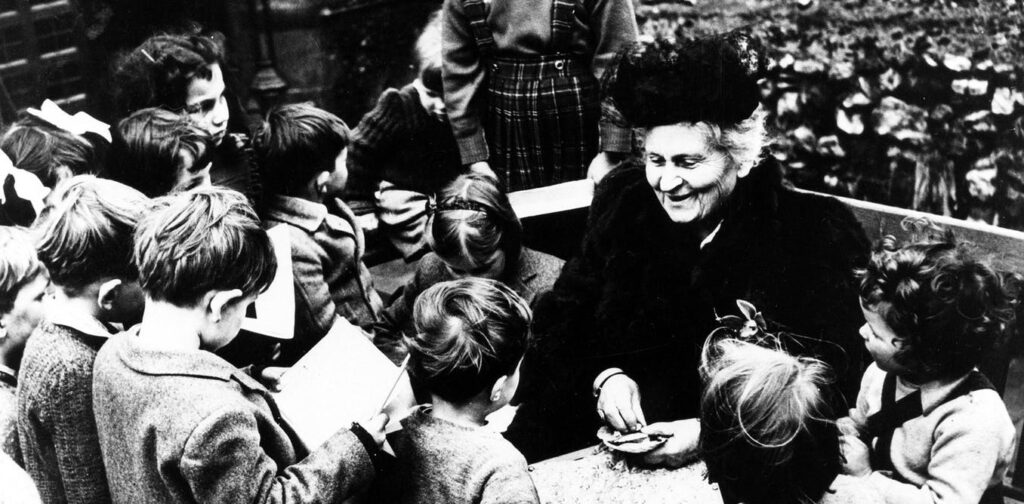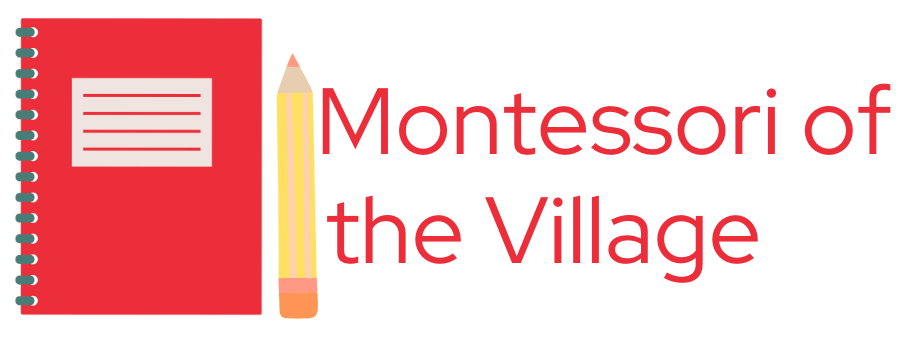Montessori
Beginnings
Dr. Maria Montessori revolutionized education with her innovative approach and philosophy. Her name has become synonymous with a child-centered learning environment that promotes independence, creativity, and holistic development.

Dr. Maria Montessori
Who Is Dr. Maria Montessori?
Montessori’s educational method emphasizes the importance of hands-on learning, self-directed activities, and individualized instruction. She believed in creating an environment that fosters curiosity and allows children to learn at their own pace.
Through her extensive research and observations, Dr. Montessori developed a curriculum that encompasses not only academic subjects but also practical life skills, sensorial experiences, and social-emotional development.
Her approach has been widely adopted around the world, as educators recognize the immense benefits it offers to children. The Montessori method encourages critical thinking, problem-solving skills, and a love for lifelong learning.
Dr. Maria Montessori’s legacy continues to inspire educators and parents alike to create nurturing environments where children can thrive academically, emotionally, and socially. Her work has had a profound impact on education globally and will continue to shape the future of teaching for generations to come.
Montessori Principles
- Children learn best by doing rather than just watching and listening. Moreover, they enjoy repetition. Montessori exercises require physical activity and involve practicing skills.
- Interaction with one’s environment requires accurate observation and controlled responses. Montessori exercises are designed to sharpen sense perception and to refine muscular control.
- For children, the world is a large, bewildering place, full of complex processes and chaotic events. Montessori schools crate a simple, orderly environment in which children can focus on concepts and operations. Classroom materials are designed to eliminate distractions by emphasizing only one facet or aspect.
- To master more difficult exercises later on, children must first learn disciplined patterns of activity. Therefore Montessori lessons are highly structured and precise. Each lesson consists of a series of operations. Movements are always done left to right and top to bottom, thus preparing them for reading, writing and arithmetic.
- To exercise freedom, children must have opportunities to choose. Montessori children are given lessons involving several different sets of materials, all of which are within reach. Students are then left to decide how to allocate their time among the various exercises.
- Independence is also facilitated by control of error. Montessori exercises are designed to be self-correcting. When children can easily remedy their own mistakes, the emotional frustration in learning and the need for adult intrusion into the learning processes are minimized.
- To develop persistence in students, each Montessori exercise must be carried out into completion before another is begun. The final step in each lesson is always to return classroom materials to their proper locations.
- Children have a passion for learning, but their interests and abilities change as they mature. Dr. Montessori was able to map out different “sensitive periods” in the mental development of children, during which they seen as especially attracted and receptive to various subjects and skills-e.g. verbal language, ages 1 ½-3 years, writing 3 ½ – 4 ½ years and reading 4 ½ – 5 ½ years.
- Sensitive periods vary from one child to another and are not easily influenced by external stimuli. Attempts to accelerate learning timetables using rewards, punishments, or artificial exaggeration of competitive peer pressures are ineffective and may be counterproductive. Montessori teachers emphasize individual, self-paced learning in a cooperative environment. Children of different ages are mixed so that older students serve as role models or even directly assist younger pupils.
- Montessori teachers must be sensitive to the changing needs of their students, must understand the purposes of various Montessori exercises, and must then match the two appropriately. Teachers not only prepare the classroom environment and demonstrate exercises to their students; they also track each pupil’s progress individually and time the introduction of new lessons accordingly.
Schedule Your
Tour Today!
Fill out the form below, and we will reach out to you as soon as we can!
